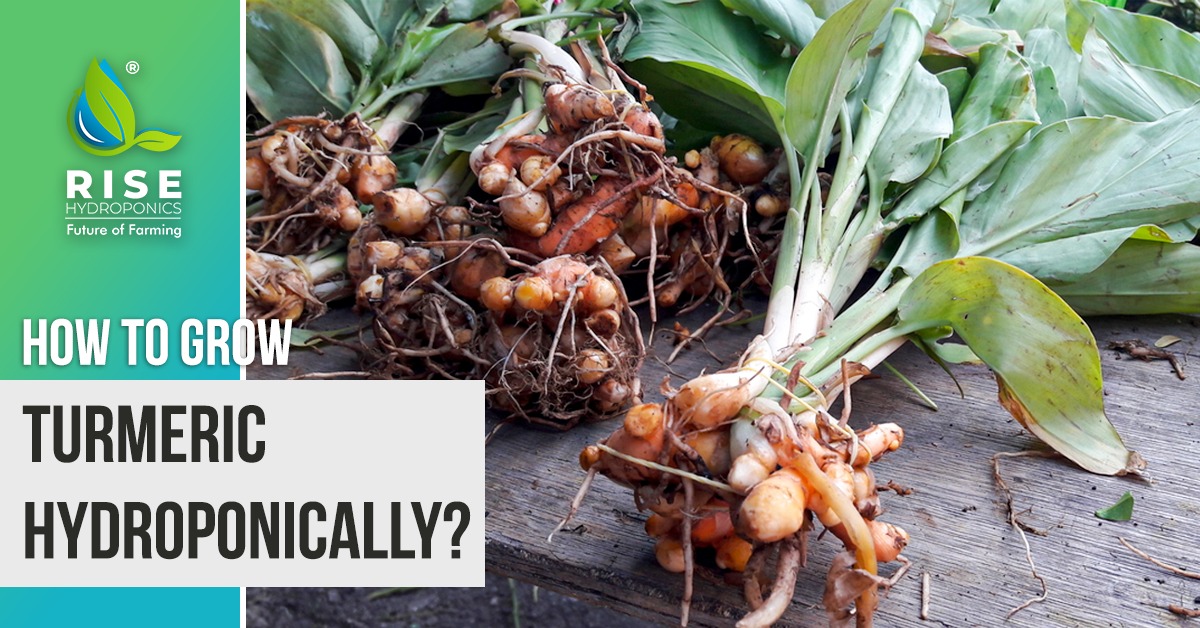What’s Indian food without turmeric? It adds a rich aroma and color to Indian dishes – and makes them easy to digest! It’s no wonder that turmeric is an extremely popular crop for farmers. New-age growers love to grow turmeric hydroponically to improve their yields.
But is it a good plant for hydroponics? Let’s find out!
Why Grow Turmeric Hydroponically
Do you know why turmeric is so abundantly found in the subcontinent? That’s because it is a heat-loving plant that’s also perennial in nature. It is also excellent for hydroponics, and most growers prefer to farm it vertically, in stacked layers without soil.
Studies show that hydroponic farming can generate more yields than conventional agricultural methods. You can expect anything between 9.3 and 12.7 times improvement, as long as you provide proper warmth and humidity in a controlled environment!
Do you know the best part? With hydroponics, you don’t need to worry about soil-borne diseases that commonly affect rhizomes like turmeric. Wouldn’t you want to eliminate all problems that can affect the yield – especially after all the hard work you will put in?

Are you planning to go for large-scale production of turmeric? Then a non-soil growth medium is ideal for your plan. The multiple rhizomes produced by turmeric need a lot of room to grow properly – and only a soft medium like rock wool or perlite can provide it.
Soil does not offer the same stability or support. A horizontal growth system with a non-soil medium in a plastic bag and a nutrient solution fed through drip irrigation – that’s what can bring you prolific growth when you grow turmeric hydroponically.
Best Conditions for Growing Turmeric Hydroponically
When grown properly, turmeric can be an absolute goldmine. But, for that, you need to be extremely careful about the growing conditions. Let’s take a look!
a) Light
For the best growth of your turmeric crops, the light required should be of 400-700 nm spectrum. It is known as Photosynthetically Active Radiation, i.e., PAR. A LED grow light can help you adjust this. But remember to provide this light to the plant for 11 hours.
b) Humidity
The ideal humidity required for the hydroponic growth of turmeric is 70-90%. Otherwise, the leaves of the plants, especially the old ones, develop burn tips. Fun fact: when you grow turmeric plants close to each other, they will create a humid environment for themselves.

c) Temperature
We have already told you that turmeric thrives well in the heat. That’s why it grows so well in the summery months of May and June. For best results, you need to maintain a temperature range of 80-90 F, or 26-32 C – and going below that will result in slow growth rates.
d) EC and pH Levels
For your turmeric plants to grow and thrive, you need a nutrient solution with an EC (electrical conductivity) of 2.2-2.6. On the other hand, the pH level should range between 5.8 and 6, which is considered a good pH balance for hydroponic rhizome farming.
e) Nutrients
Your turmeric plants need food just like you do! There are three categories of nutrients that your turmeric crops will need. The plants will derive oxygen, carbon, and hydrogen from air and water. Other nutrients required are –
a) Macronutrients
- Nitrogen
- Potassium
- Phosphorus
b) Micronutrients
- Manganese
- Iron
- Zinc
- Copper
- Cobalt
- Molybdenum
- Boron
c) Secondary Nutrients
- Magnesium
- Calcium
- Sulphur
In conventional farming, the crops will derive these nutrients from the soil. But don’t forget that your plan is to grow them without soil. So it’s upon you to provide the nutrients through the solutions you’ll feed the plants.
Steps to Grow Turmeric Hydroponically

You now know the basics of hydroponic turmeric farming. Now let’s take a quick look at the steps you must follow.
- Find a bumpy mother rhizome with at least two eyes.
- Place it in water for a day in a warm environment to sprout it.
- Cut it into 5-15cm pieces, each weighing about 5-7g, keeping the buds whole.
- Put cocopeat and perlite(20%)/clay balls in a metallic trough or grow bags.
- For sufficient space, provide an area of 2 ft x 2 ft x 1 ft (W x B x H).
- Plant the pieces in the growth medium, cm apart, with the buds facing up.
- To accommodate more crops, you can plant them in a zigzag format.
- Provide 400-700nm light for approximate 11 hours using a grow light.
Also Read : What is Hydroponics, and how is it the future of farming?
Conclusion
Plants are no different from taking care of a dog. Depending on the species or the temperature, they need different conditions. You have to be careful about the nutrients you give them and when and how you feed them.
The same goes for turmeric. You can grow it hydroponically for large-scale production. It’s easy to grow, even for commercial use. All you need is to ensure that you follow the right steps and provide your crops with proper growing conditions in which they can thrive!

